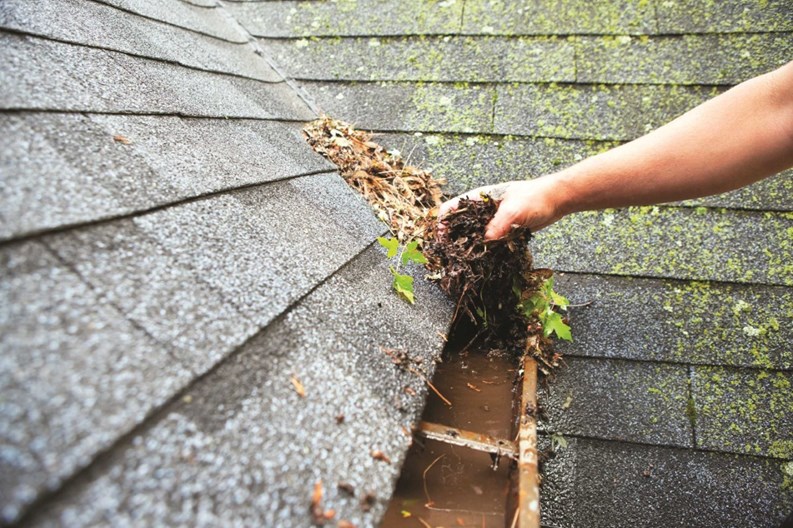Winter may not be over in Chicagoland, but for condos and HOAs, it's time to start looking ahead to the warmer months. Freezing rain and wind beat relentlessly at the façade. Snow accumulates on the roof, turns to ice, and when it thaws, seeps into co-op or condo units below. Systems in the building work double-time to keep home-bound residents warm and cozy.
With the first days of spring around the corner, now is the time to take stock of any damage the winter has done and launch a spring cleaning and repair program. There are also those smaller aspects of getting a community ready for warm weather action.
“We have what we call management plans, that we put items on there that happen in the spring, like putting in aerators, changing clocks, that kind of thing,” says Judy Ramos, property manager at ACM Community Management in Downer's Grove. “If the buildings are maintained like they should be, you shouldn't have a lot of damage from winter. It's usually going to be rotted wood, pitted concrete from salt, turf damage from the snow plows. All of those items are items you would check in the spring,” says Ramos.
Many wood balconies and decks in the Chicago area go through some of harsher punishment of winter, and replacing any rotted wood as soon as the weather lets up allows for a stable, good-looking balcony come summer.
It’s What’s Outside that Counts
Best done in early March, a springtime inspection works from the outside in. Most managers agree the the first order of business is a comprehensive evaluation of the exterior envelope. An important initial point of inspection is simply to check the surrounding exterior of the building, especially the roof for any material that might be loose or insecure do to any harsh winter winds.
It's necessary to find any possible areas of penetration for water, the primary enemy of any building structure. In winter, freezing temperatures will cause any moisture in metal and brick elements to expand, which can cause cracks and breaks in the facade.
Points of particular concern are areas where two different types of materials meet, say, limestone, brick or concrete and metal. The difference in physical properties causes different reactions to the elements, and that differing movement can cause cracks, the initial symptom to any structural problem down the road.
You don't need an advanced degree to see what looks defective in a building: gaps, cracks, fissures, blisters, buckles, flaking, can allow moisture to seep into individual units. The edges of doors and windows, anything that penetrates the exterior, tend to be the biggest culprits of cracks and deficiencies.
Little Crack, Big Flood
To the layman, cracks can seem pretty innocuous. But, just one crack in the wall of one floor can lead to a flood downstairs with a heavy rainfall. Minor cracks in the façade can be treated with silicone—a simple, but temporary, solution. But in older buildings, aging bricks might have to be replaced and repointed. “We have that freeze/thaw cycle that causes asphalt to crack. Asphalt is going to take moisture in and those areas have to be analyzed and looked at, and bids have to be taken care of to fix issues like potholes or crackage quickly so it doesn't get any worse,” says Joel Garson, president of Hillcrest Property Management in Lombard.
To gauge the extent of repair that needs to be made on a particular crack or fissure in the façade or on the roof, maintenance personnel and managers may want to keep a record of photographs to show any inconsistencies with the facade.
To access damage to the façade that might not register on a visual inspection, managers might reach out to the residents. Some diligent managers have their supers go around the building or send out a questionnaire to people after the winter, asking if they see any signs of water penetration in their apartments.
Up on the Roof
The next stop is the rooftop. Low temperatures in the winter can cause cracks in the roofing cement if you are not careful about patching cracks the rest of the year. The main culprit is snow, which can pile high and then melt slowly when temperatures go above freezing.
With a single blister or crack on the roof covering, the solution is simple and cheap: cut it out, dry the area and patch it. Come six months later, and the roof shows two more blisters, that usually is a telltale sign that the area is continuing to lose its integrity, at which point it's likely you would need to replace the roof.
An outside look of the exterior can help plan for what's ahead in repairs. “At the same time you're out there, you might as well look at the structure of the building to see if painting, if there is raw wood, or if painting needs to be done, or caulking, that type of thing,” says Garson.
Some managers pick a pleasant day to take the board out and get a group inspection of the building's exterior. “With more eyes looking at something, the greater chance of finding a problem. And it's also a good thing for being able to be with the boards so they know that you're out there looking, and you're looking our for their better interest,” says Garson.
Landscape contracts tend to be a bit more straightforward, since it's a reliable bet there will be damage from snow removal and the weather every year. “Our landscape contracts all include things they're going to take care of in the spring. If there's any damages to the turf from snow removal, they make those repairs. They usually treat for crab grass in the spring, and fertilize as well,” says Ramos.
The salt and other chemicals used to help snow melt will wreak havoc on any grass lawn, so landscapers will likely have to replant or re-sod some parts of the lawn.
Hit the Pavement
Associations in Chicago have to pay closer attention to the sidewalk, as city ordinances take special care to make sure public spaces are not dangerous for pedestrians. That's why buildings have to stay up on facade inspections, snow removal, and the general state of the sidewalk.
Cracks in the sidewalk, a common result of the expansion and contraction caused by the winter freeze/thaw cycle and erosion of the connecting joints in reaction to the salt applied over snow and ice, allow water to leak into the building infrastructure, possibly flooding storage, boiler room, laundry or other basement areas.
Minor cracks in the pavement and joints connecting the concrete can be filled with silicone, but an elevation of half-an-inch or more is a tripping hazard and might require replacing the entire 5’ x 5’ concrete slab.
On the Inside
Building staff normally cleans building interiors year-round, but they need to step up the routine in winter and early spring to deal with extra dirt and debris dragged in from the street.
“Generally, we recommend that owners get an A/C check for summer. Same thing with their heaters, they would have those done before winter, so checking the air conditioning units, making sure all your filters are changed, that it's clean. We do offer that service to unit owners individually. Boilers are something that the association will look at—to shut down the boilers,” says Ramos.
Also in spring, the pumps that take water from areas of the building to the city drains during a flood command special attention. They should be tested and debris should be removed.
Clear the Air
Winter is the season for hunkering down, staying warm and cozy at home. With windows closed, A/C units sealed off, we cook at home or order out, watch TV, read a book—bide time through the long, cold, dark winter nights until spring has sprung.
Three or four months with the windows closed and co-op and condo units at maximum occupation, as the environmental professionals call it, leaves a toll on ventilation and exhaust systems in the building.
According to Ryan Schneider, managing director of sales at Chute Master Environmental based in Union, New Jersey, “With greater occupation during the winter a number of contaminants and air pollutants, specifically pet dander, dust or even chemicals, are pulled into the HVAC system and re-circulated up to five and seven times a day.”
Even buildings without elaborate HVAC systems recycle contaminants through bathroom and kitchen exhaust vents and ducts. With windows closed, explains Schneider, “all the heat and condensation and buildup in the air in the bathroom goes to the path of least resistance: the exhaust vent.”
The building should call in an environmental cleaning professional in the spring to access the health of the ventilation duct work throughout the building and, if necessary, clean the ducts to remove the buildup of contaminants. The professionals use powerful EPA-approved HEPA vacuums to suck up and dispose of fine particles. If clogged, the ducts can release contaminated air into the living spaces. And clogged ducts put stress on the building’s mechanical exhaust systems.
What Goes Down
In winter, everyone suddenly discovers how close they are to the trash room.
“During the holidays people throw anything and everything down the trash chute, and in winter people order food in more,” says Schneider—“and not everybody packages their garbage the way they should.”
The contents of leaking trash bags and open bottles and containers stick to the trash chutes and accumulate in the basement trash compactor, causing a buildup of odor and organic debris, which can attract pests. Items such as unopened paint cans can cause a fire hazard.
Also, says Schneider, “when you don't clean the mechanical properties of the trash chute it tends to break, pumps tend to go, hoses tend to go, and you end up paying for costly repairs and replacing your compactor years earlier than you should.”
Inspecting every trash door and baffles on every floor are very helpful to make sure they operate correctly. With a trash compactor, management may want to oversee a plan of preventative maintenance: check the switches, the relays, crack or welds, the oil, the fire suppressant and the equipment that surrounds it.
The Great Landscape
The early days of spring also happens to be the time when the greenery begins to re-emerge. “The landscaper is going to come out and do his spring cleanup which should include the raking of the lawn, raking out of the shrub beds of any leftover leaves that might have fallen after their last time through, their analysis of what needs to be done as to pruning and that kind of stuff. And they'll also find conditions from the snow plowers, and let the management know that,” says Garson.
Leaving spring cleaning to the professionals will make maintenance during the summer and fall a breeze.
Tom Lisi is a staff writer at The Chicagoland Cooperator. Freelance writer Steve Cutler contributed to this article.







Leave a Comment